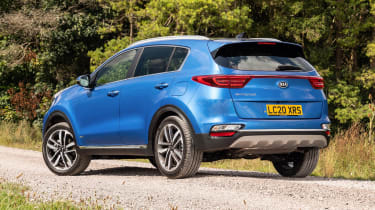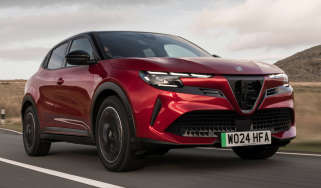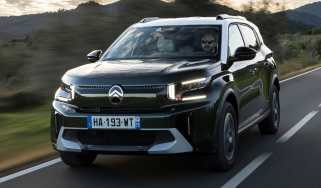Used Kia Sportage review: 2016 to 2021 (Mk4) - Running costs, MPG, CO2 emissions and insurance
Fuel economy and insurance costs are average for this type of car, so the Kia Sportage won’t be much different from rival models in terms of costs
In general, family SUVs like the Kia Sportage tend to have higher running costs than traditional family cars such as the Ford Focus or Vauxhall Astra. That’s because these models are larger, heavier and some have four-wheel drive, so keep that in mind if you are deciding which type of car is best for you.
If you’re set on an SUV, then you’ll want to know what the running costs are like in the context of other models like the Sportage, and the Kia falls below the best models of its type. It’s merely average when it comes to things like fuel economy and emissions.
With a used car there are other considerations, such as reliability, although we’ll cover that in another section. Repair costs can mount up, and the fact that the Sportage comes with a seven-year warranty means that it should cost less to keep on the road than other similar models – not that we’d expect it to need endless repairs anyway.
How much do used Kia Sportages cost?
The Kia Sportage is a mid-size family SUV, which means you’ll pay more for one of these than a typical family hatch such as a Ford Focus, but not as much as what you’ll sometimes see called a ‘premium’ SUV – one from a brand such as BMW or Mercedes, even if they are a similar size.
More reviews
In-depth reviews
Used car reviews
The Sportage sits somewhere in the middle of its own type of car, so you can expect to pay a little more for the Kia than an equivalent Nissan Qashqai, but a Mazda CX-5 will typically be slightly more expensive than the Sportage. However, it’ll only be a matter of hundreds rather than thousands of pounds in most cases, if everything else is equal.
Depreciation is pretty average as well - our experts reckon it will lose around 50 per cent of its as-new value after three years or 36,000 miles depending on trim level and engine, which is about as average as it gets.
What’s it like for fuel economy, emissions and tax?
While this Sportage can’t quite match the class leaders for economy and emissions, it’s not far behind. The most fuel-efficient version – the two-wheel-drive 134bhp mild-hybrid 1.6-litre diesel – emits from 146g/km of CO2 and returns an average of up to 50.4mpg regardless of whether you pick the manual or automatic gearbox. Go for the four-wheel-drive version of the same engine and fuel economy falls to 42.8mpg and 173g/km of CO2.
A more powerful 182bhp diesel engine was available prior to 2020. This 2.0-litre motor returned 44.8mpg and 166g/km of CO2, or you could go for a 134bhp version of this engine that managed 47.9mpg in auto form and 54.3mpg as a manual. The most efficient diesel was the 1.7 CRDi, which returned 61.4mpg and 119g/km with a manual gearbox, though only older models have this engine. Note that this figure was achieved on the NEDC test cycle, rather than the newer WLTP cycle.
Alternatively, you can go for one of the petrol engines. All models have 1.6-litre engines, one of which is turbocharged and the other having no turbo. The entry-level, non-turbocharged model produces 130bhp, will return up to 38.7mpg on average and emits 166g/km of CO2 with help from Kia’s ISG stop-start technology.
The more powerful turbocharged petrol engine is now available with two- and four-wheel drive, but the latter does affect its fuel economy and CO2 emissions. The front-wheel-drive version with a manual gearbox manages 35.3mpg, while choosing the seven-speed dual-clutch automatic gearbox increases this to 37.7mpg, with emissions of 170g/km. The four-wheel-drive version with a manual or automatic gearbox both return up to 33.2mpg and 192g/km of CO2 emissions.
How much will it cost to insure?
The Kia Sportage should be around average in terms of insurance, too. The 2.0-litre diesel with 134bhp sits in insurance group 19 in manual form and if you upgrade to a 184bhp version of this engine then the group rating goes up to 22. The 1.7-litre CRDi diesel in older versions of the Sportage sits in a lower group, 12, if you go for a low trim level. A later mild hybrid diesel is only a little higher, in group 14.
This compares with group 18 for a 1.7-litre diesel Nissan Qashqai and group 16 for a 1.5-litre Peugeot 3008 diesel. Choose a petrol engine for the lowest insurance costs: the 1.6 GDi engine sits in groups 11 to 13 depending on trim.
The higher-powered petrol is more expensive to insure, sitting in group 20-23, which is about the same as a 1.6-litre petrol Qashqai but a little lower than a Peugeot 3008 1.6 petrol, which is in group 24.















